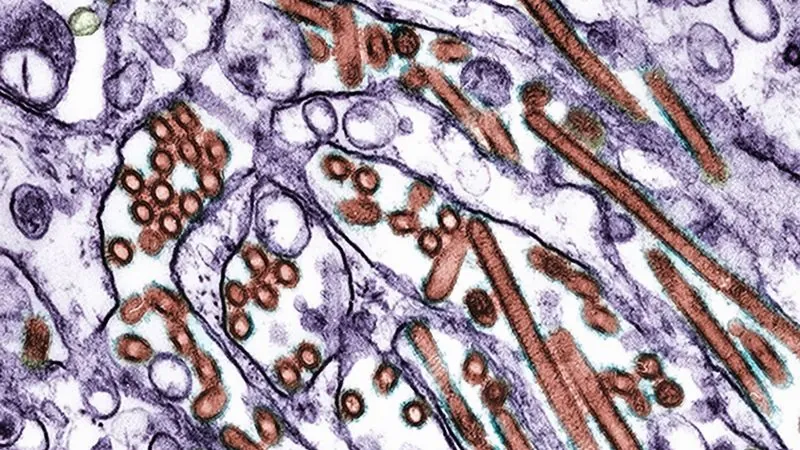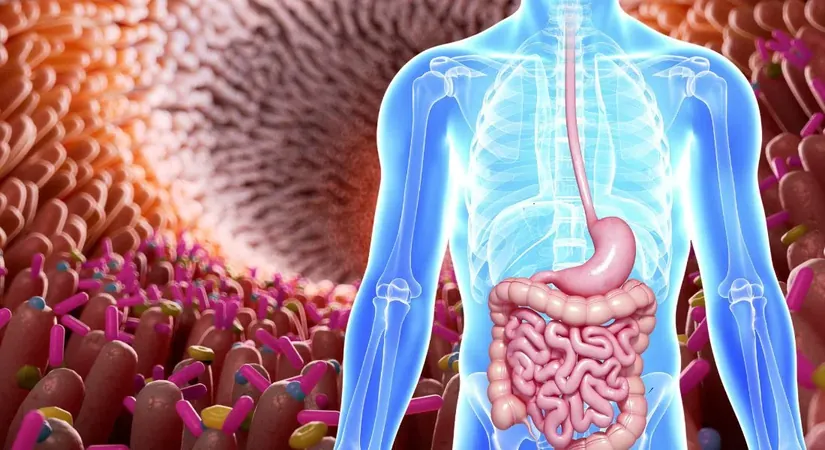
Alarming Discoveries: Bird Flu Virus from Vancouver Teen Shows Signs of Human Adaptation - What You Need to Know!
2024-11-21
Author: Noah
Recent Concerns Over H5N1 Virus
A recent case involving a teenager hospitalized in Vancouver, Canada, has raised concerns among scientists after the avian influenza (H5N1) virus isolated from the patient exhibited mutations that could enhance its ability to infect humans. This unsettling discovery signals the potential for future strains that could increase transmission risks.
Current Condition and Investigation
The teenager, who is currently in critical but stable condition, has been at the center of an extensive investigation. Despite thorough monitoring, public health officials, including British Columbia's provincial health officer Dr. Bonnie Henry, have reported that no further cases have emerged among the teen's family, friends, and healthcare providers. This suggests that the mutated virus has not circulated beyond this individual.
Significance of Mutations
Dr. Jesse Bloom, a computational virologist, highlighted that this case presents one of the first instances of observed mutations in the H5N1 virus that align with those concerning for human adaptation. Two significant points are clear: first, the strain affecting the teen is genetically distinct from the one prevalent in U.S. dairy cattle, and second, it closely resembles a strain circulating among wild birds in the Pacific Northwest. To illustrate, these variations can be likened to how Delta and Omicron differed within the SARS-CoV-2 virus family.
Implications for Transmission
The mutations identified in the virus are located in critical areas that could optimize its ability to bind to human cells. Historically, avian flu viruses have favored a type of cellular receptor (alpha 2,3) abundant in birds, but the recent mutations suggest a shift toward the human-preferring alpha 2,6 receptors. Notably, human infections with H5N1 in the U.S. have previously manifested with symptoms like red, inflamed eyes—an area predisposed to alpha 2,3 receptors, potentially indicating the virus's entry point.
Expert Opinions
Dr. Scott Hensley, an expert in microbiology and immunology, remarked on the significance of these mutations, confirming that they correspond with the adaptations scientists have been monitoring. He cautions, however, that while the findings are concerning, they do not herald the onset of a pandemic at this juncture. He stresses the importance of further studies to assess the virus's transmission capabilities.
Continued Vigilance Necessary
Despite the original case appearing to be an isolated incident, experts are issuing warnings that this event serves as a reminder of H5N1’s evolutionary potential. With 53 recorded human cases of bird flu in the U.S. and ongoing outbreaks in livestock and wild birds, the risk persists. Dr. Bloom noted that the H5N1 influenza virus is widespread, and due to its high mutation rate, the possibility of acquiring similar adaptations in future infections remains.
Public Advisory
As health officials continue to monitor the situation, the public is advised to stay informed and prepared. With the potential for viruses to adapt, vigilance becomes key in managing future outbreaks. The current case exemplifies how quickly the landscape of viral infections can change, making it imperative for both the scientific community and the public to remain alert.
Conclusion
Stay tuned for updates as studies progress and more information surfaces regarding this evolving situation!









 Brasil (PT)
Brasil (PT)
 Canada (EN)
Canada (EN)
 Chile (ES)
Chile (ES)
 España (ES)
España (ES)
 France (FR)
France (FR)
 Hong Kong (EN)
Hong Kong (EN)
 Italia (IT)
Italia (IT)
 日本 (JA)
日本 (JA)
 Magyarország (HU)
Magyarország (HU)
 Norge (NO)
Norge (NO)
 Polska (PL)
Polska (PL)
 Schweiz (DE)
Schweiz (DE)
 Singapore (EN)
Singapore (EN)
 Sverige (SV)
Sverige (SV)
 Suomi (FI)
Suomi (FI)
 Türkiye (TR)
Türkiye (TR)